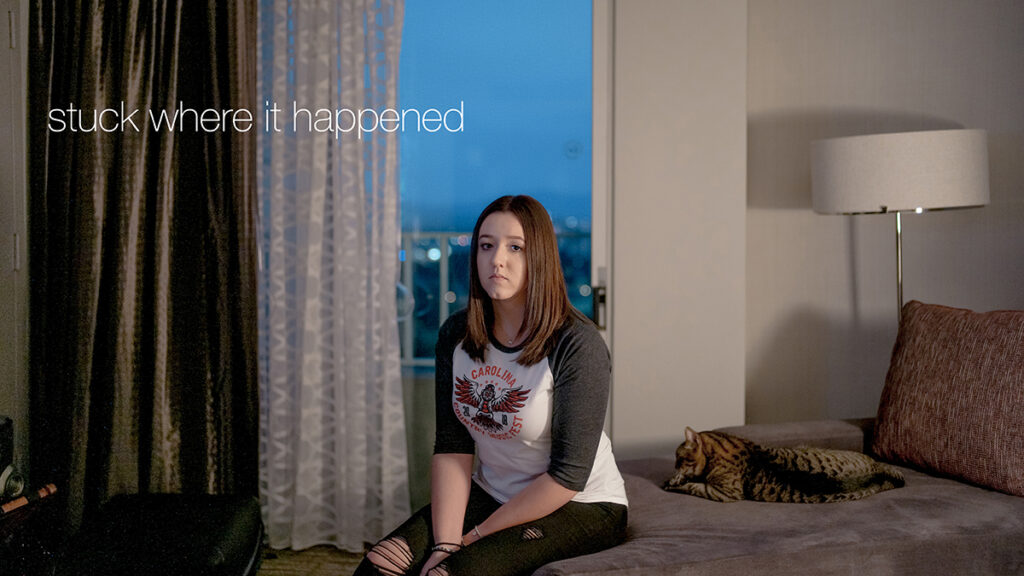Journalism seniors receive honors from 2020–21 Hearst award for Multimedia Narrative Storytelling

Often called the “Pulitzers of college journalism” — the awards program consists of 14 competitions held throughout the school year: five writing, two photojournalism, one radio, two television and four multimedia.
By Jennifer Nelson-Pallikkathayil

Columbia, Mo. (Feb. 16, 2021) — Missouri School of Journalism senior Jacob Moscovitch won fourth place for multimedia narrative storytelling in the 61st Annual Hearst Journalism Awards Program. As part of the honor, he received a $1,000 award and qualified for the Hearst Journalism Awards National Multimedia Championship, which will be held in June. Senior Tristen Rouse received 20th place for multimedia narrative storytelling.
Moscovitch and Rouse’s entries were among 90 entries submitted by students at 51 schools.
Rouse’s multimedia entry was “The Long Run.”
Brian Kratzer, director of photography for the School’s professional community newspaper the Columbia Missourian submitted Moscovitch’s story “Stuck where it happened” to the contest, which was published to Moscovitch’s project-specific website. He is also a reporter for the Missourian and was previously the assistant director of photography.
The piece tells the story of Lara Edwards, who finds herself struggling with PTSD again after leaving her college studies early to go back to her hometown after COVID-19 struck. The PTSD originally developed after Edwards experienced a traumatic experience in her hometown. A few years earlier, she had been in a bar in her hometown when someone opened gunfire in the bar. She began struggling again with the PTSD because of being back in her hometown, being isolated and seeing the news of COVID-19. Moscovitch had previously photographed Edwards, who was also one of his high school classmates, for a project The New York Times was doing on the shooting’s survivors and he said he wanted to continue to tell her story.

“Jacob has become talented at creating portraits that interpret the mood and feeling emanating from the person with whom he’s connecting,” said Kratzer, who is also an associate professor. “This is a skill he’s been working on for several years. Jacob reads the individual then — through light and lensing — creates the metaphor of the mood. He spends time interviewing people, getting quotes, and synthesizing this into a vision. He’s developing his method to explore the nuances of emotions. In this portrait series, he’s working with interpreting the stages of recovering from a traumatic event, meeting the people in their space and visually translating depression, anxiety, and melancholy.”
Moscovitch began working on the story for his Video Documentary class when he returned home from studying abroad in Denmark at the Danish School of Media as part of the University of Missouri Journalism Abroad exchange program.
The multimedia package features a video and written story. Moscovitch, who is studying photojournalism, says his studies aren’t directly linked to documentary journalism, so he was thankful for the opportunity to “expand my comfort zone and work within a new medium.”
“I think the biggest thing I learned from making this project was the power of hearing the person in the story’s voice, being able to hand them the metaphorical pen, the metaphorical camera, the metaphorical microphone and allow them to tell the story without any infringement by the journalist,” he said. “This was such a pure way of telling the story and it taught me the power of allowing others to speak through our journalism.”
Moscovitch said Danish School of Media faculty member Simon Sticker helped him craft the narrative visually and “shape the interview footage into a compelling script.”
According to Sticker, who is also an independent visual storyteller, Moscovitch’s story shows the depth and time that was put into it.
“I think it is an important story about the effects of COVID, especially at that time in the spring last year, where most people were focused on the virus itself,” said Sticker. “To be able to unfold the deeper effects of COVID on his character’s trauma, created a linkage that I think just in the last months, we are seeing in the broader discussion about it – the effects on mental health. It also combined problems like mass shootings with COVID, isolation, trauma, in a simple yet beautiful way, what I think is the strength of most good stories. Lastly, I think he managed to also create a visually strong story, what is even stronger, when you think that he did not know, if you could even enter her house for instance, had very limited time and had to work with a lot of workarounds to build the story. So at the end, I think it is a combination of all those aspects that made the story award-winning.”
Moscovitch said he was also thankful for the journalism classes he took with professors David Rees, Jackie Bell and Brian Kratzer prior to completing this project, which helped prepare him for some of the technical and storytelling aspects of this project.
The Hearst Journalism Awards Program is conducted under the auspices of accredited schools of the Association of Schools of Journalism and Mass Communication and fully funded and administered by the William Randolph Hearst Foundation. Often called the “Pulitzers of college journalism” – the awards program consists of 14 competitions held throughout the school year: five writing, two photojournalism, one radio, two television and four multimedia. The program awards up to $500,000 in scholarships and grants annually.
Updated: May 4, 2021